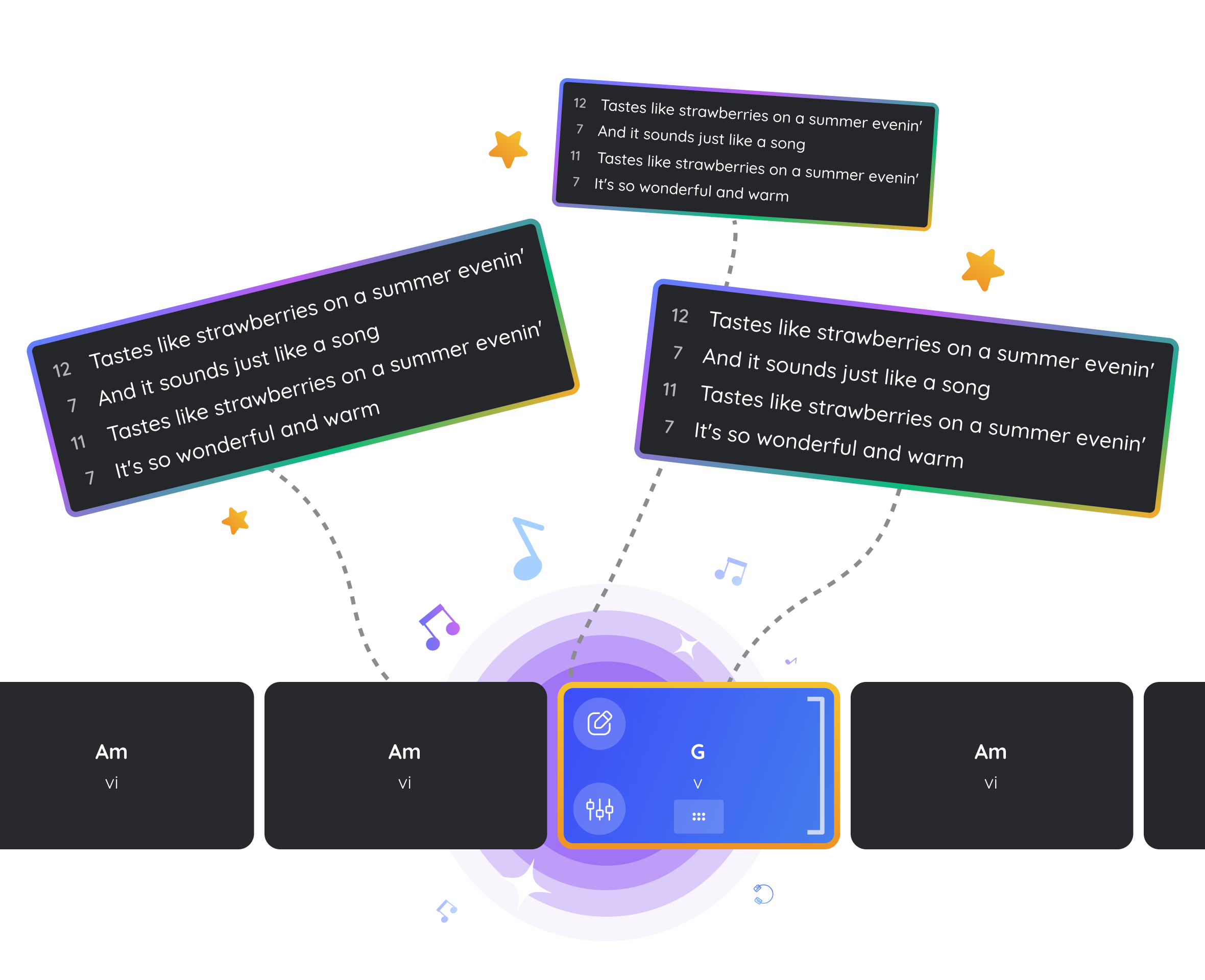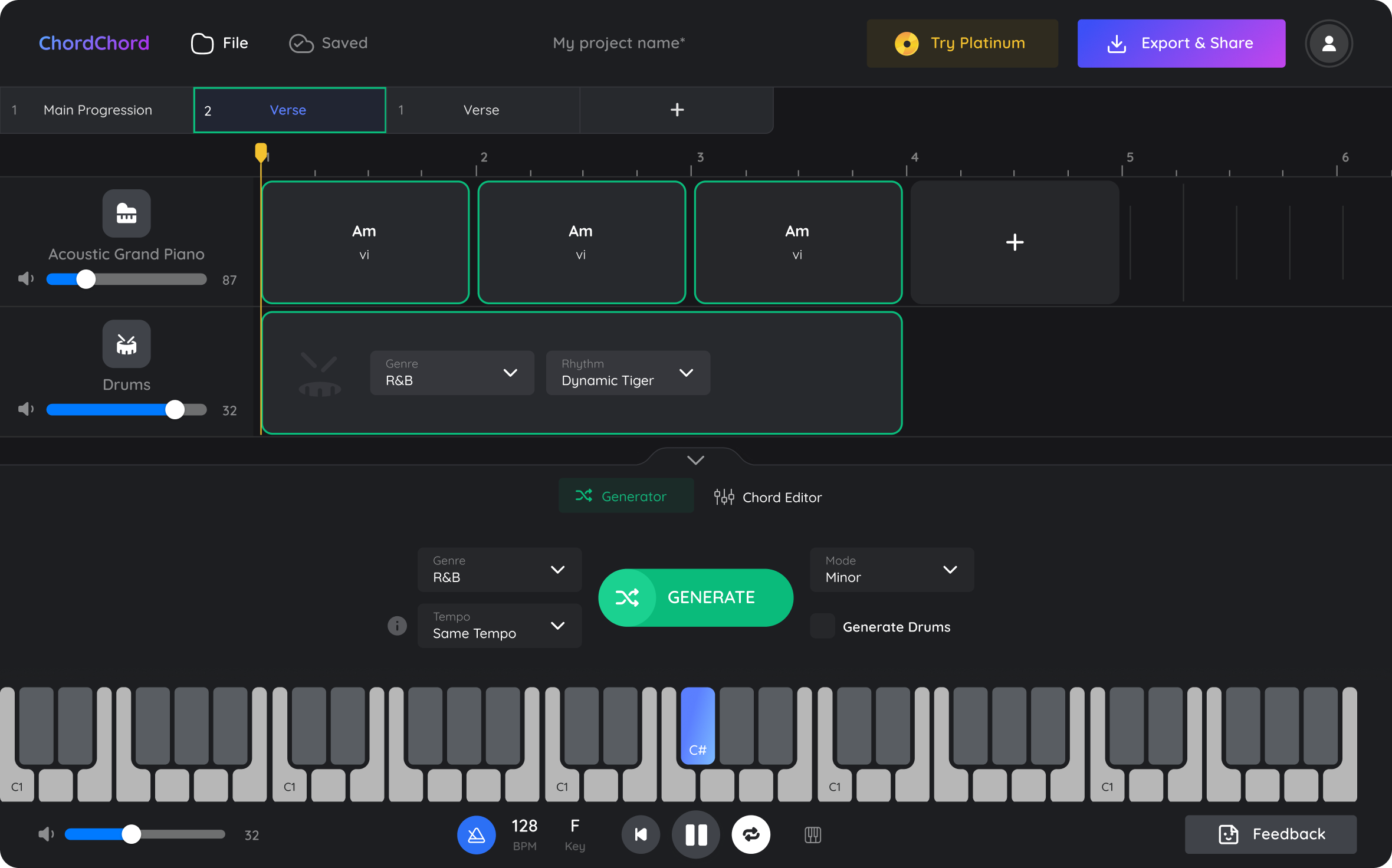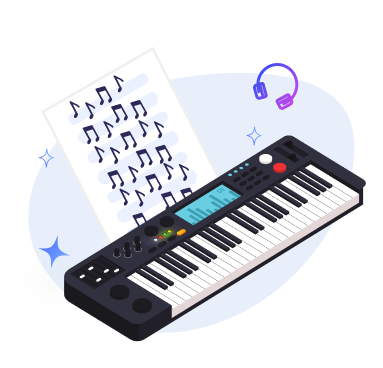
How to Write Song Lyrics
If you’re an aspiring songwriter, you probably know that writing lyrics is one of the most important skill sets you need to develop.
While creating unique and meaningful lyrics can be a challenge, it's a crucial part of the songwriting process.
In this post, we’ll provide you with some practical tips on how to write engaging lyrics for your songs.
This is Chapter 3 in the
How to Make a Song GuideStarting with an Idea
Before you start writing lyrics, you obviously need to figure out what to write about. It could be something you’re passionate for, or something that’s been on your mind lately. It could also be a specific event or situation that you want to share with the world.
If you find it challenging to come up with a song theme that truly connects with you, our free Song Ideas Generator can come in handy!
This tool is designed to effortlessly generate creative and inspiring song ideas that will get your songwriting process started in no time.

Another great tip is to brainstorm and simply jot down any words, phrases, or lines that come to mind.
Don't worry about the order or structure of the lines yet; just focus on getting your ideas out of your head and onto paper or your notes app.
Now that you have your song idea, it's time to shape it into a cohesive structure.
Structuring Your Lyrics
Think about how the lines should flow and how the words should be arranged to match the chord progression of your song. Consider the rhythm and cadence of your words and how they fit together.

Using different rhyme forms can also help give structure to your lyrics and help you determine how to arrange your words for maximum impact.
For example, a couplet is a two-line rhyme form in which the last word of each line rhymes.
“The sun will rise and fall again
But our love will never end.”
Another type of rhyme form is the tercet, which consists of three lines in which the first and third lines rhyme. An example of a tercet is:
“I’m gonna hold you, touch you, squeeze you
Gonna tell you, show you, feel you
I’m gonna keep you, never leave you.”
Finally, a quatrain is a four-line rhyme form that typically rhymes in aabB pattern. An example of a quatrain is:
“Oh, I’m a gonna rise up singing
I'm a gonna lay my burden down
I'm a gonna break these chains of sorrow
All over this wide and lonesome town.”
Remember: there is no right or wrong when it comes to choosing the specific structure or rhyme form, but experimenting with and blending them together are key aspects to catching your listener's ear and keeping them engaged with your song.
Experimenting with Language
When you’re writing lyrics, don’t be afraid to experiment with different types of language. Integrating foreign vocabulary, slang or pronouncing some words with a foreign accent can add a unique flavor and depth to your song.
To enhance your lyrics and make them truly stand out, try using metaphors, similes, and other poetic devices, while combining them with interesting rhymes.

Creating a Melody
Writing lyrics to fit a melody is a common approach in songwriting.
By humming or singing a melody to a chord progression, you can create a framework for your song's melody.
From there, you can start to craft lyrics that fit the rhythm and melody of the song, giving it a cohesive and memorable structure.
If you need help creating a unique chord progression to write your lyrics, try using the ChordChord Generator. Choose from a variety of instruments and sound settings to create an organic and unique progression that will provide a great starting point for your song.

Writing lyrics to fit a melody can be a fun and creative process, and it allows you to explore different emotions and themes that can be conveyed through your music.
Learn more about creating great melodies in the next in-depth article on how to write a melody that your listeners will love.



